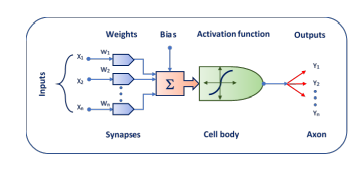

Particles multiplicity based on rapidity in Landau and artificial neural network (ANN) models
In this paper, artificial neural network (ANN) model is used to estimate the multiplicity per rapidity for charged pions and kaons observed in various high-energy experiments from central Au+Au heavy-ion collisions with energies ranging from 2–200 GeV, and then compared to available experimental data, including RHIC-BRAHMS experiment, and covering the energy range of the future accelerator facilities at NICA and FAIR. We also used Landau hydrodynamical approach, which has a better description for the evolution of hot and dense matter produced in ultra-relativistic heavy-ion collisions. The approach is fitted to both results estimated from experiment and ANN simulation. We noted that the Landau model accurately reproduces the entire range of multiplicity per rapidity for all created particles at all energies. Also ANN model can reproduce the multiplicity per rapidity very well for all the considered particles. This encourages us to use ANN model to predict the multiplicity per rapidity for k− particles at energies 12.2 and 17.3 GeV. © 2022 World Scientific Publishing Company